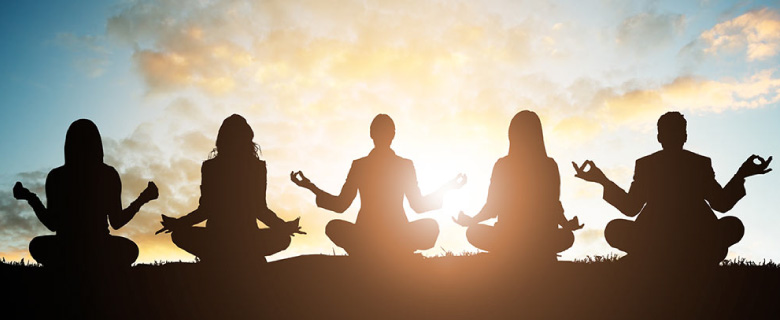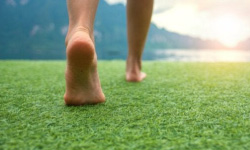
Which Meditative Practice Will Benefit you?
Mediation and Wellness. What does it do for you? We may associate meditation our entire lives with folding in a pretzel, sitting cross-legged or in a padmasana (lotus seat), and rubbing our thumbs on our index fingers to deeply focus on the point between our two eyes that display swirling colours. This is a typical western perception of meditation.
This is the posture that many meditators adopt at first while indulging in any meditation practice, which may make meditation blissful for the first 10-minutes, and after that they quit. This is a vicious cycle for many wanna-be meditators. To ensure this discipline doesn’t make you antsy and to get the most out of the meditation benefits, you have to gain clarity and know what works best for you according to your body type.
So, which mediation practice fits you well? Interestingly, your dosha can answer this for you accurately. Based on Ayurvedic principles, determining your dosha can help you identify your constitution, and specific strengths and weaknesses, especially where meditation and wellness is concerned, with which so many of us struggle!
What is the importance of meditation for Dosha?

If you have read the classical Ayurveda text, Ashtanga Hridayam, you would have heard of the terms Vata, Pitta, and Kapha. The book says that everything that is manifested comprises the 5 elements (Earth, Water, Fire, Wind, and Space, called Pancha Maha Bhutas) and their properties, in various proportions. Similarly, the human body is also made up of these five elements, and the qualities of these elements exist and engage with each other to perform many bodily functions.
The 3 dosha together interact with each other to decide your individual constitution and how you feel. No one dosha is superior or inferior to the other, and each has a special set of functional roles inside the body. Balancing these 3 dosha is what you call “Health” and any paucity or excess leads to an imbalance, which later manifests as a “Disease”. The balance between Vata, Pitta and Kapha is attributed to genetic influences from birth, eating habits, change of climatic conditions and more. Attaining balance is one of the primary meditation benefits, with which you will notice a sense of calmness and happiness permeating the mind, body and soul.
In simple terms, whenever a dosha is aggravated, an imbalance is generated, and it has its effect in every walk of your life. You can easily find out your pre-determined dosha balance and acquired dosha imbalance, by answering this questionnaire.
Most commonly, people have two dosha more dominant than the third, like Vata-Kapha, Kapha-Vata, and Pitta-Vata.
But in one’s life, dosha isn’t a fixed thing. It keeps changing as you age and when lifestyle changes are introduced. Ayurvedic medicines, yoga and meditation practices are of great help in bringing balance to the 3 dosha so you can move disease-free for a lifetime.
Which is the Right Meditation Technique, depending on your Dosha?
1. Vata Dosha: Mantra Meditation

As Vata individuals tend to begin several tasks that they cannot accomplish, try the affirmations “I’m centred, I’m focused” to invoke these qualities in your everyday life. Repeating a potent power mantra in a rhythm is one of the most powerful ways to relax a jittery or speedy mind and improve concentration.
Practice the “Ram” chant to ground you and connect you to your Root Chakra. Mala beads are useful in tracking repetitions of mantra because they have some weight, and that tangible anchor helps balance excess Vata.
How to do Mantra meditation:

1. Choose a power potent mantra like “Hare Krishna Hare Krishna Krishna Krishna Hare Hare” or “Ram”. The mantra has a specific sound vibration that has the potency to uplift one’s consciousness.
2. Sit in a comfortable position, place a mala over your middle ring finger of the right hand while relaxing your index fingers.
3. Loosen all the face muscles and close your eyes.
4. Move the mala beads with your thumb, one bead at a time, and start slowly chanting the maha-mantra.
5. Do that 108 times, or until your mind finds complete clarity.
2. Pitta Dosha: Meditation on the Breath

Pitta is the fiery Dosha, where a person sees a tangible reward in everything and gets upset if their time is wasted. When pitta dosha gets aggravated, it emerges as mental agitation, impatience, or indignation. Cooling and calming meditation techniques are the only way to help them settle.
Practising mediation techniques that redirect a Pitta individual’s focus to their breath helps refresh and rejuvenate the mind and body. So even though it seems like you’re just sitting, it’s anything but! Pittas should practise ‘Meditation on the breath’ for 15 minutes daily that can cool their bodies and assist in resetting the mind into a tranquil state, allowing them to tackle any of life’s exacerbations.
How to do Meditation on the Breath:

1. Get a comfy seat with no distractions or disturbances around.
2. Sit down, keeping your spine tall and legs crossed, with both hands resting on your lap, palms facing upwards.
3. Slowly close your eyes. Relax the face muscles.
4. Keep the focus on the abdomen area. Observe closely the natural rhythm and feeling of air going in and out of the belly without regulating the breath.
5. Practice it for a few minutes or until you feel relaxed and happy.
3. Kapha Dosha: Walking Meditation

Kapha people have a propensity to be calm and sit in one position for long hours without moving. Focusing the mind with ‘mindfulness meditation’ won’t do much for you, as you already have a calm mind. A good daily movement and the one meditation practice that works to reduce excess Kapha is ‘walking meditation’. This practice keeps you engaged enough to not let you drift off into a somnolent state and also balances your dosha.
Since daily movement automates some of our most basic and essential self-care practices, if you are a Kapha Dosha, you should try doing supportive Kapha-balancing routines daily to invoke certain qualities that put you at ease.
How to do Walking Meditation:

1. Find a quiet indoor or outdoor place – a long hallway or Terris area would be suitable.
2. Remove your shoes and socks to feel the sensation of your weight as you lift and rest your feet with each moving step.
3. Stand in a mountain pose, relax and be aware of your every breath.
4. Begin to walk, slowly and rhythmically, either back and forth in a long line or a circular path.
5. Anchor your mind on your foot’s sole as you move, and you will experience the feeling that your foot is rising off the floor, travelling across space, and being placed on the ground again.
6. Do it for 15 minutes, rest, and acknowledge how you feel.
Conclusion:
The idea is not to be paranoid about your dosha but to understand what suits your body type best. Ayurvedic texts strongly advocate the importance of meditation, physical activity and having a balanced diet. The dosha shed light on our personal nuances, guiding us in making desirable changes to balance them by tweaking our food habits and lifestyle according to our own dosha analysis.
Practising mediation techniques according to your dosha not only helps you maintain great wellness but also mentally uplifts your mood and gives greater stability to the mind.
You can register with Mi.Bo.So to get personalised guidance from a yoga coach. In addition, you also get an online consultation package with a customised diet plan, Ayurvedic supplements and daily schedule from a team of Ayurvedic vaidyas and certified nutritionists. It’s easy to lead your healthiest, happiest life with Ayurveda for the mind, body and soul.
Have any queries? Feel free to leave a comment below and we’ll get back to you!





4 Comments
Chinmayi Paranjape
How will meditation help me to stay fit?
ReplyMeditation helps to calm the mind and reduce stress. It is better to practice meditation daily for optimum results. It also allows you to balance your Doshas, and it could be a great routine that can be added to your daily health and fitness management routine. As your Doshas change as you age, Ayurvedic medicines, Asanas, and meditation practices will help you balance your Doshas easily.
So you see, it helps in achieving mental wellness, keeping your mind fit and stress-free.
Sayali
Why should one practice mediation according to their Doshas?
ReplyYour Prakruti is responsible for your likes, dislikes and your overall behaviour. You must follow remedies based on your Prakruti as these activities will directly impact your well-being and deal with the Dosha imbalance. Therefore, you should include dosha-specific meditation practices in your daily health and fitness management routine.
Thank you. Your comment will be visible after an approval.
Add your comment